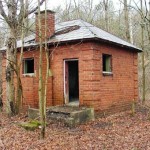 While out taking a Sunday drive with the wife, we stumbled upon San Toy, one of the little cities of the black diamonds, the town of San Toy in Perry County Ohio is gone now, but it has a lot left to indicate that a thriving community once stood at this intersection in the rural backwoods of coal county
While out taking a Sunday drive with the wife, we stumbled upon San Toy, one of the little cities of the black diamonds, the town of San Toy in Perry County Ohio is gone now, but it has a lot left to indicate that a thriving community once stood at this intersection in the rural backwoods of coal county
Between 1900 and 1927, San Toy was a prosperous company town. It was created by the Sunday Creek Coal Company to provide lodging for its employees at the two San Toy coal mines. How did it get its odd name? There are so many stories that it’s impossible to say. It was a fad of the Victorian era to give things Chinese-sounding names, so maybe San Toy just sounded good. Another story says that the town’s best boxer was named Sam Troy, and they wanted to name the town after him, but the handwriting on the town’s charter was misread and misprinted. Probably the closest thing to the truth is the story that the Sunday Creek Coal Company had invested in a Broadway musical called San Toy (which actually did exist around the turn of the century). When it flopped they lost a lot of money. The story goes that, surveying the town, one said to another, “Let’s hope this isn’t another San Toy”

Laborers came from local areas or were imported from places as far-flung as Europe; the ridge near San Toy is called Irish Ridge. When the Ku Klux Klan revived in the 1920′s they targeted Catholic immigrants in San Toy, but the company hired men to run them off. In the mines, everyone was the same color.
Mining is a notoriously dangerous occupation, and in San Toy regular blasting made it even worse. Frequent tremors shook the earth. Conditions were not the worst, but on occasion miners did die underground, as well as in the saloons.
Up on the surface, San Toy developed remarkably for its short life span. At its peak in 1917 it boasted a baseball team, several saloons, a jailhouse, the Lyric Theater, and even the only hospital ever in Perry County. The coal company took care of its workers when times were good–especially during World War I, when the demand for coal was at its peak.
Some of the most famous stories surrounding San Toy are those ofthe acts of violence  committed in its streets. Some legends say there was a murder a day, although that seems unlikely. What is likely is that it was a little town full of men who carried guns and had little to do when not working other than drink their paychecks and fight. According to Addison Vanhorn, a local, “It was a tough place. If you took a walk up the railroad tracks with a lantern, somebody shoot it out.”
committed in its streets. Some legends say there was a murder a day, although that seems unlikely. What is likely is that it was a little town full of men who carried guns and had little to do when not working other than drink their paychecks and fight. According to Addison Vanhorn, a local, “It was a tough place. If you took a walk up the railroad tracks with a lantern, somebody shoot it out.”
In September 25, 1924, angry miners rolled a coal car full of burning railroad ties into mine #1, starting a fire which destroyed not only the mine but also the theater and the hospital. Mine #2 operated until March 31, 1927, when the Sunday Creek Coal Company decided to abandon the mine rather than modernize it. One miner commented that his tools and equipment are still presumably in the mine from the last day of work.
After that San Toy tried to hang on, turning to moonshine for a while, but it was a lost cause. The mine was what had kept things going.
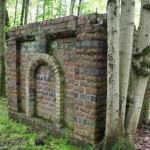 San Toy achieved a dubious sort of fame in 1930: It was the town in the United States which had dropped the most in per capita population since the previous census. In 1931 the 19 registered voters elected by a margin of 17-2 to abandon the town. Today there are about fifty people living in the area which was once San Toy, but their address is more likely to be New Lexington, and they get their mail through rural free delivery.
San Toy achieved a dubious sort of fame in 1930: It was the town in the United States which had dropped the most in per capita population since the previous census. In 1931 the 19 registered voters elected by a margin of 17-2 to abandon the town. Today there are about fifty people living in the area which was once San Toy, but their address is more likely to be New Lexington, and they get their mail through rural free delivery.
I’ve made the trip to San Toy several times. and we couldn’t find anything but the intersection where the town was supposed to be (about a mile from Irish Ridge Road). If you go, you pretty much have to do it in the daytime, unless you know exactly what you’re looking for. Going when the trees aren’t full of leaves is also a good idea; the buildings stand in the woods on either side of San Toy Road.
The signs that a town once stood here are immediately visible, if you know what you’re looking for.
First of all, the gravel road shows brick cobblestone streets underneath, in places–the  streets of San Toy. Also present are crumbling sidewalks and even a primitive traffic light, which was one of the first in the county. It’s so overgrown with vines that you really have to know what it is to recognize it. But what San Toy consists of today is mostly foundations. They’re everywhere on either side of the road, stretching back into the trees. These were mostly miner’s homes, and pacing the diameter of the brick foundations gives you an idea of the conditions they lived in. The picture above shows you how close the quarters were; the outside steps of one building almost touch the back of another.
streets of San Toy. Also present are crumbling sidewalks and even a primitive traffic light, which was one of the first in the county. It’s so overgrown with vines that you really have to know what it is to recognize it. But what San Toy consists of today is mostly foundations. They’re everywhere on either side of the road, stretching back into the trees. These were mostly miner’s homes, and pacing the diameter of the brick foundations gives you an idea of the conditions they lived in. The picture above shows you how close the quarters were; the outside steps of one building almost touch the back of another.
The mines are still there, too; I’ve been able to locate one. At least one of the mines is across from most of the foundations. Two concrete shafts slope downward, disappearing into the ground. The big wooden structure above once surrounded these entrances. I’ve heard it theorized that one shaft was the ventilation and the other was for the miners. The mine shafts are bricked up, and I’ve heard that they’re probably flooded as well. Mines are supposed to be the most dangerous abandoned things to explore, but I did want to try to get down there until I heard about the flooding. Near the mine shafts is the pumpstation–a small brick building which used to cover a well. If there was ever a fire in the mines (as there was during the strike), water could be pumped up from the well and used to put it out. Today the pumpstation is still standing, complete except for the well and the roof.
The only building still standing in San Toy is the only one which had to be made out of 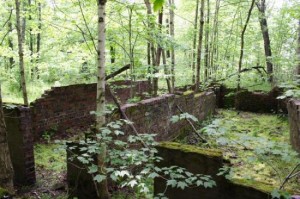 brick: the jailhouse. It’s missing its door and windows; the cell door is likewise missing, although you can still see the metal hinges where it once hung. A former town marshal at San Toy reported that he once placed thirteen men in the single cell at once. Hard to believe with such a small cell, but if half the stories about the town are true it might have been necessary. The jailhouse was supposedly called Scotland, because its first resident was a Scottish miner. In the 1950′s a man named Paul Devore bought the jailhouse and turned it into a “summer home,” complete with TV and a wood-burning fireplace. I hope Paul was a bachelor, because it’s pretty small to stay in with another person. At some point he abandoned the place too. Today it’s full of dirt and spray paint.
brick: the jailhouse. It’s missing its door and windows; the cell door is likewise missing, although you can still see the metal hinges where it once hung. A former town marshal at San Toy reported that he once placed thirteen men in the single cell at once. Hard to believe with such a small cell, but if half the stories about the town are true it might have been necessary. The jailhouse was supposedly called Scotland, because its first resident was a Scottish miner. In the 1950′s a man named Paul Devore bought the jailhouse and turned it into a “summer home,” complete with TV and a wood-burning fireplace. I hope Paul was a bachelor, because it’s pretty small to stay in with another person. At some point he abandoned the place too. Today it’s full of dirt and spray paint.

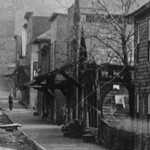
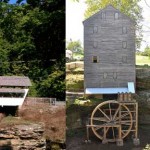
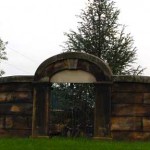
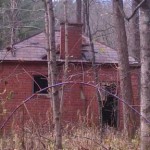




























Follow me on Social Media